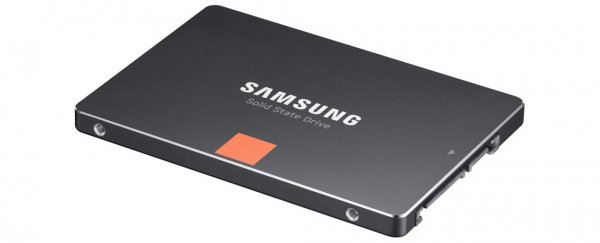It's not always easy to fit our computing lifestyles within the bounds of our computing hardware. Photos, movies, music, games – you name it. All our digital media starts to add up after a while, and before you know it you've run out of room on your hard drive.
Which is why the news that Samsung has just unveiled the world's biggest hard drive immediately piqued our interest. The Korean company revealed its new uber-mega-drive this week at the Flash Memory Summit currently underway in California. And this thing really is big, offering a whopping 16 terabytes of storage, which is a whole 6 terabytes larger than the previous record holder.
To put things in perspective, 16 terabytes would hold over 3 million MP3s, more than 4,000 movies, nearly 5 million digital photos… you get the picture. This sucker is huge. It's 1,000 times bigger than an entry-level iPhone and 32 times bigger than the storage in the computer on which I'm writing these words.
Best of all, Samsung's new drive is a solid state drive using NAND flash for storage, not a mechanical hard disk drive using platter technology. This means it'd be quick, lightweight and energy efficient, with no moving parts like the ones used in older hard drives and computers. (Admittedly, there's still oodles of mechanical hard drives being released onto the market each year, although mostly for cheaper devices or desktop PCs.)
According to Sebastian Anthony at Ars Technica, Samsung had to increase the density of its flash chips in order to squeeze so much capacity into a conventional 2.5-inch SSD:
The secret sauce behind Samsung's 16TB SSD is the company's new 256Gbit (32GB) NAND flash die; twice the capacity of 128Gbit NAND dies that were commercialised by various chip makers last year. To reach such an astonishing density, Samsung has managed to cram 48 layers of 3-bits-per-cell (TLC) 3D V-NAND into a single die. This is up from 24 layers in 2013, and then 36 layers in 2014.
Sadly, there a few caveats to the PM1633a, the model number Samsung is using for the drive. First, it's being targeted at enterprise markets, with no word on when (or if) we'll ever see a consumer release. This actually makes perfect sense. As nice as it would be to enjoy so much digital head room, it's unlikely there'd be much genuine consumer demand for such a capacious hard drive.
For example, it's unlikely you know anybody who's taken 5 million photos. (In fact, it's quite possible nobody ever has.) Huge companies and government bodies do however need data capacity and lots of it. Scary amounts, in fact.
Then there's the tiny matter of price. Anthony estimates the PM1633a will cost in the order of US$8,000 when it eventually hits the market. Now if you'll be so kind, please excuse me while I remove it from my online cart.
